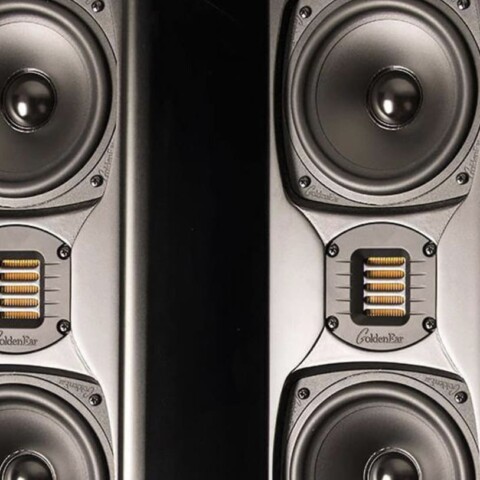Dyson Corrale Hair Straightener REVIEW
Summary
Dyson Corrale Hair Straightener REVIEW
Dyson poured loads of cash and science into their latest creation which PAT PILCHER’s better half got to try out on her fulsome and naturally curly hair.
$749

James Dyson is the tech equivalent of Roald Dahl’s fictional character Willy Wonka. Like Wonka, Dyson cranks out a startling array of gadgetry that never fails to elicit an involuntary “oh” and “ah”. Although Dyson gear commands a price premium, many (myself included) will pay the price because Dyson gadgets are beautifully crafted, innovative, and genuinely useful.
Frustratingly their latest – a cordless hair straightener called the Corrale – isn’t much use to me. Given how little hair I have left, I had to rely on my wife to put it through its paces.

Much of the clever stuff with the Corrale comes down to what Dyson calls “flexing plates”. Where most hair straighteners use fixed ceramic hotplates, the Corrale uses 65-micron thin, flexible copper plates. These are mounted onto 15 micro hinges per plate. Because they bend, they give the Corrale the ability to grab hair evenly.
This ensures heat is evenly distributed and isn’t concentrated in one or two spots. It also means you don’t need to run the hotplates over your hair as often, which in theory equates to less heat damage to your hair. The Corrale runs at three different heat settings, 165°C, 185°C and 210°C. Dyson has engineered ‘Integrated Intelligent Heat Control technology’. It regulates plate temperature 100 times a second and makes sure that heat sent to the plates is as advertised.
The numbers around the Corrale’s development are boggling. It took seven years to refine the product, and £25m (NZ$47.8m) was invested in its R&D, with a whopping £100m (NZ$191.5m) invested in hair labs globally which employed hundreds of hair scientists. User testing involved over 600 hours of user trials happening across five countries and including over 800 participants.

This sort of innovation costs, and it’s reflected in the Corrale’s somewhat steep $749 sticker-price.
Looks-wise, the Corrale is very Dyson. Its beautiful hot pink industrial design makes it look both sleek and futuristic, and it’d be as at home on a sci-fi film set as it was in our home. By comparison, My wife’s GHD straighteners seemed like a plain and petite appliance connected to a tangle of mains cord.
The Corrale comes with both a futuristic-looking charging dock (which does double duty as a stand) and an optional magnetic clip-on mains cable. In addition to the stand, there’s also a pouch you can pop these Dyson hair straighteners in which can do double duty as a heatproof mat. The overall look is very Dyson. The Corrale aren’t your garden variety hair straighteners.

They’re also a bit chunkier than most other straighteners, being both slightly longer and wider. Given that they’re loaded with batteries they’re heavier too – the wife’s GHDs weigh around 270g which is close to half the weight of the Corrale (which weighs 565g).
The whole arrangement is powered by four lithium ions batteries that can be fully charged in 70 minutes. Should you need to use the Corrale while its batteries are flat, you can attach the magnetic charging cable.
So, the Corrale looks good, and its tech sounds promising, but what is it like in practice? I passed it onto my wife for a fortnight to try, and here are her thoughts following her Dyson Corrale review.
The flexible copper heat plates mean that the Corrale can hold hair, spreading it out to heat it evenly. In theory, this should see the Corrale glide through hair. This was the first thing my wife picked up on.

“I noticed that when I straightened my hair properly, it came out very shiny and held the straightening better than when I use my GHD straightener – my hair didn’t need straightening the next day, unlike with GHDs.
I found I needed to slow down for the best results – hauling it through my hair like I do with the GHDs didn’t work so well. It glides through much more lightly than the GHDs, which meant that if I used the same approach, it would be more of a natural look – if I wanted a better straightening result, slowing down worked well.”
The bugbear the Corrale overcomes is the fiddliness involved with using corded hair straighteners. While most work fine in one hand, when you swap hands to straighten the hair on the other side of your noggin, their balance shifts as the attached power cord drags everything so you end up doing a not such a great job straightening your hair on one side of your head.
Going cord-free sounds great in theory, but no cord also means batteries, and this was something my wife noticed: “Having no cord makes it easier as you aren’t having to move the cord around, and of course you don’t need to have a power socket and a mirror in the same place. However, the battery does make the unit heavier and I did notice this.”

The battery popped up repeatedly. My wife noted the utility of being able to operate without a wall socket. “When fully charged, the straightener would last for almost two straightening sessions (I have long, thick and naturally curly hair). The most practical way to use this would probably be to recharge after every use by putting the unit back in the charging cradle. It would be heavier to travel with than the standard power cord approach, but of course, you can use it without a power socket, which could be very handy – provided it was charged.”
While she liked the Corrale, my wife made the astute observation that a corded, lighter and less bulkier version of the Corrale would be a great idea too: “Personally, I’d love the straightener but without the battery option – if there’s a model like this, that will be my next straightener purchase.”

Dyson says that for most hair types, using the Corrale at the lowest of its three heat settings is probably best. These are selectable using + or – minus buttons. The lowest heat setting is about 165c. When the Corrale reaches its pre-set heat, it beeps to indicate it’s good to go.
My wife enjoyed using it during her Dyson Corrale review and seemed impressed with its finish. Its cord-free design might be unique, but I wonder if Dyson could have made a smaller, lighter (and more affordable) mains only version.













